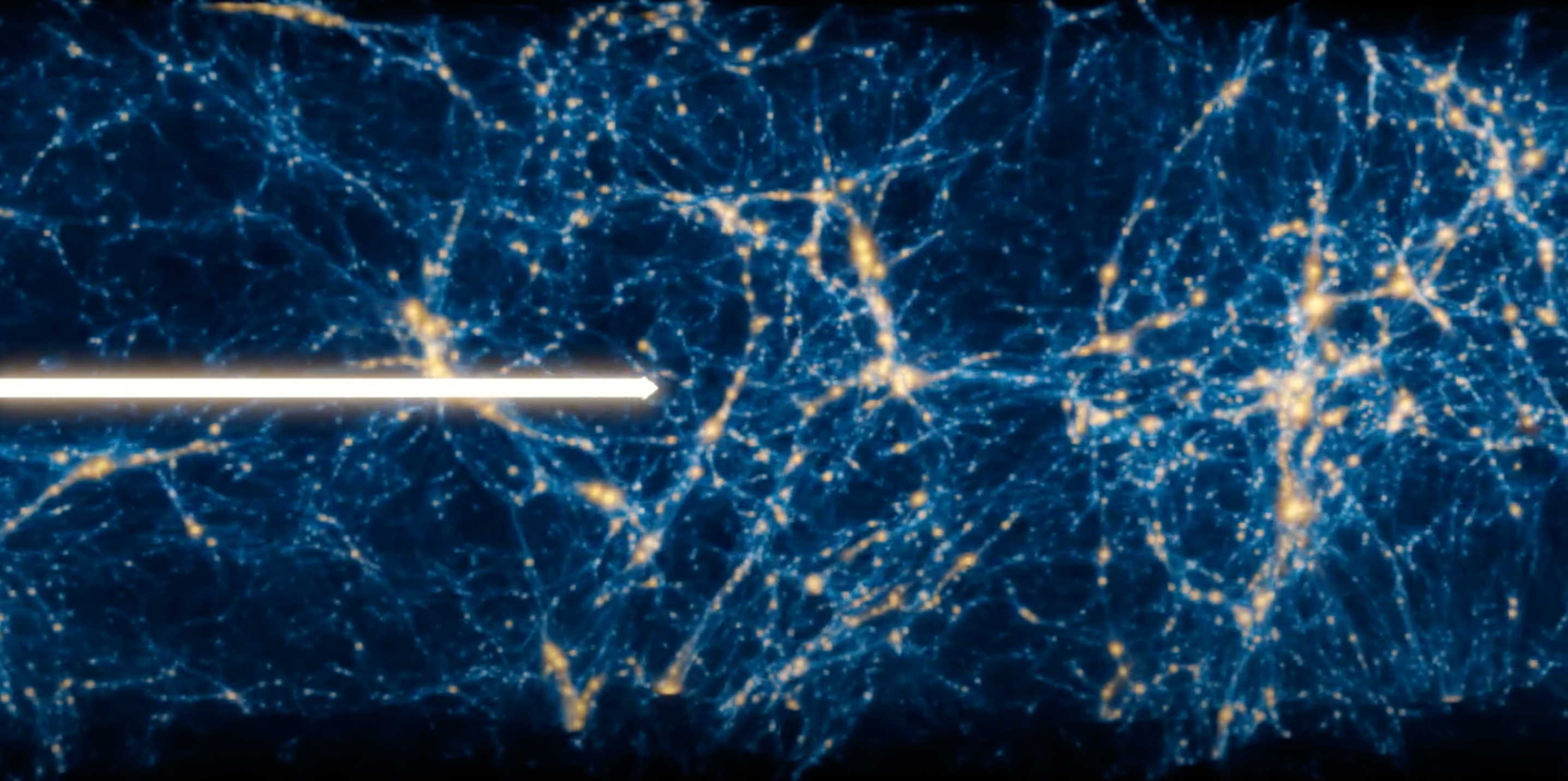A groundbreaking study by researchers at the University of California, Riverside, has provided further insight into the structure of the universe and potentially supports the existence of a previously unobserved particle. By utilising the "Lyman-Alpha Forest", a powerful tool for mapping hydrogen distribution in the cosmos, the astrophysicists have gained a deeper understanding of the distribution of matter, including elusive dark matter.
The "forest", a pattern of absorption lines in the spectra of distant quasars and galaxies, is so named due to its dense and intricate appearance on graphs, resembling a tangled thicket of young trees. The study, published in the Journal of Cosmology and Astroparticle Physics, employed a novel model and simulations to reconstruct the distribution of matter across vast stretches of the universe.
Lead author, Simeon Bird, an associate professor of physics and astronomy at UCR, explained that the peaks observed in the Lyman-Alpha Forest's wavelength distribution graph represent sudden dips in "light" at specific, narrow wavelengths, acting as a map of the matter encountered by the light on its journey to Earth.
"It's a bit like shadow puppetry, where we infer the character placed between the light and the screen based on its silhouette," Bird said. "The 'shadow' of hydrogen molecules, suspended at vast distances between us and the intense luminous sources even farther away, is well-understood by astrophysicists."
The images used, called spectrograms, are essentially decompositions of light, akin to a finely detailed rainbow. Just as sunlight passing through a prism (or water droplet) splits into the colours of the rainbow, spectrograms of light from cosmic sources like quasars reveal missing frequencies, appearing as black bands where light is absent.
"These missing frequencies are due to the atoms and molecules encountered by the light along its path," Bird explained. "Since each atom has a unique way of absorbing light, leaving a distinctive signature in the spectrogram, we can trace their presence, especially hydrogen, the most abundant element in the universe."
Bird emphasised the significance of hydrogen as a tracer of dark matter.
"Although we haven't directly observed dark matter, we know it exists in abundanceâmore than normal matter," he said. "When we used hydrogen to track dark matter indirectly, it was like 'sticking dye into a stream of water'. The dye follows the water's path. Similarly, dark matter has a gravitational potential, attracting hydrogen gas, which we use as a tracer. Where the density of hydrogen is higher, there's more dark matter. Think of hydrogen as the dye and dark matter as the water."
The work by Bird and his colleagues goes beyond simply monitoring dark matter. Current cosmological studies report discrepancies, or "tensions," between observations and theoretical predictions.
"One of these tensions is the number of galaxies on small scales and at low redshifts," Bird said. "The low redshift universe is the one relatively close to us. Currently, there are two hypotheses to explain the discrepancy between observations and expectations: firstly, the existence of a new physical effect, such as an unobserved particle, or secondly, that something unusual is happening with supermassive black holes inside galaxies. These black holes might be hindering galactic growth in some way, affecting our structure calculations."
Bird cautioned that the tension hasn't yet reached the level of certainty required to definitively claim a detection.
"It's not completely conclusive yet," he said. "But if this pattern holds up in subsequent datasets, then it's more likely to be a new particle or a novel type of physics, rather than black holes interfering with our calculations."
Bird's collaborators on the paper are M. A. Fernandez and Ming-Feng Ho. The research, titled "Cosmological Constraints from the eBOSS Lyman-α Forest using the PRIYA Simulations", was funded by the National Science Foundation (NSF) and NASA, with the original survey funded by the Department of Energy. Simulations were run using NSF Frontera, and additional modelling was performed at UCR's High-Performance Computing Center.
This groundbreaking research may open new doors in our understanding of the universe, potentially revealing the existence of a previously unknown particle and its role in shaping the cosmos.
Article
Technology

New Study Hints at Existence of Unseen Particle in the Universe

